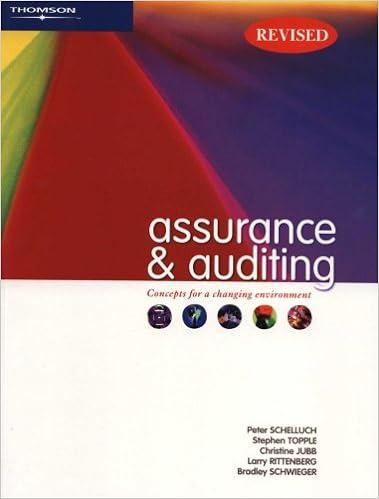I just want my answers reviewed; specifically, the last half.





Financial statements for Walton Company follow. WALTON COMPANY Balance Sheets As of December 31 2019 2018 Assets Current assets Cash Marketable securities Accounts receivable (net) Inventories Prepaid items Total current assets Investments Plant (net) Land $ 25,000 21,800 59,000 144,000 28,000 277,800 27,000 270,000 28,000 $602,800 $ 21,000 7,800 51,000 152,000 13,000 244,800 20,000 255,000 23,000 $542,800 Total assets Liabilities and Stockholders' Equity Liabilities Current liabilities Notes payable Accounts payable Salaries payable Total current liabilities $ 41,600 103,800 21,000 166,400 $ 15,700 90,000 15,000 120,700 100,000 33,000 133,000 299,400 100,000 28,000 128,000 248,700 Noncurrent liabilities Bonds payable Other Total noncurrent liabilities Total liabilities Stockholders' equity Preferred stock, (par value $10, 4% cumulative, non-participating; 8,000 shares authorized and issued) Common stock (no par; 50,000 shares authorized; 10,000 shares issued) Retained earnings Total stockholders' equity Total liabilities and stockholders' equity 80,000 80,000 143,400 303,400 $602,800 80,000 80,000 134,100 294,100 $542,800 2018 $390,000 8,600 398,600 WALTON COMPANY Statements of Income and Retained Earnings For the Years Ended December 31 2019 Revenues Sales (net) $410,000 Other revenues 11,600 Total revenues 421,600 Expenses Cost of goods sold 205,000 Selling, general, and administrative 73,000 Interest expense 13,400 Income tax expense 113,000 Total expenses 404,400 Net earnings (net income) 17,200 Retained earnings, January 1 134,100 Less: Preferred stock dividends 3,200 Common stock dividends 4,700 Retained earnings, December 31 $143,400 157,000 68,000 12,600 112,000 349,600 49,000 93,000 3,200 4,700 $134,100 Calculate the following ratios for 2019 and 2018. Since 2017 numbers are not presented, do not use averages when calculating the ratios for 2018. Instead, use the number presented on the 2018 balance sheet. a. Working capital. b. Current ratio. (Round your answers to 2 decimal places.) C. Quick ratio. (Round your answers to 2 decimal places.) d. Receivables turnover (beginning receivables at January 1, 2018, were $52,000). (Round your answers to 2 decimal places.) e. Average days to collect accounts receivable. (Round your intermediate calculations to 2 decimal places and your final answers to the nearest whole number.) f. Inventory turnover (beginning inventory at January 1, 2018, was $158,000). (Round your answers to 2 decimal places.) g. Number of days to sell inventory. (Round your intermediate calculations to 2 decimal places and your final answers to the nearest whole number.) h. Debt to assets ratio. (Round your answers to the nearest whole percent.) i. Debt to equity ratio. (Round your answers to 2 decimal places.) j. Number of times interest was earned. (Round your answers to 2 decimal places.) k. Plant assets to long-term debt. (Round your answers to 2 decimal places.) I. Net margin. (Round your answers to 2 decimal places.) m. Turnover of assets. (Round your answers to 2 decimal places.) n. Return on investment. (Round your answers to 2 decimal places.) 0. Return on equity. (Round your answers to 2 decimal places.) p. Earnings per share. (Round your answers to 2 decimal places.) q. Book value per share of common stock. (Round your answers to 2 decimal places.) r. Price-earnings ratio (market price per share: 2018, $12.65; 2019, $14.30). (Round your intermediate calculations and final answer to 2 decimal places.) s. Dividend yield on common stock. (Round your answers to 2 decimal places.) $ $ 2019 111,400 1.67 0.64 7.45 times 50 days 1.39 times 263 days 50 % 98.68 2.46 times 2.03 1.03% 2018 124,100 2.03 0.66 7.64 times 48 days 1.03 times 354 days 46% a. Working capital b. Current ratio c. Quick ratio d. Receivables turnover e. Average days to collect accounts receivable f. Inventory turnover Average days to sell inventory h. Debt to assets ratio i. Debt to equity ratio lj. Number of times interest earned k. Plant assets to long-term debt 1. Net margin m. Asset turnover n. Return on investment o. Return on equity p. Earnings per share Book value per share r. Price-earnings ratio s. Dividend yield 84.56 0.72 2.01 times 1.99 1.02 % 0.72 9.02 % 16.66% 4.58 per share 21.41 per share 2.76 3.72% 3.001% 5.76% 1.40 per share 22.34 per share 10.21 3.29% pic











